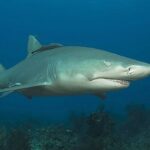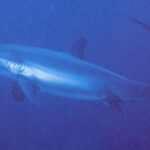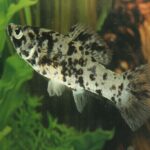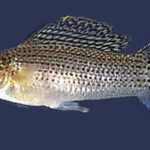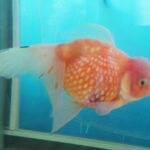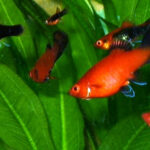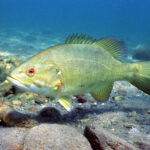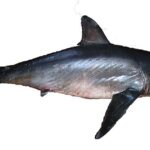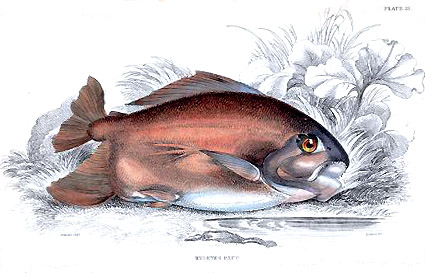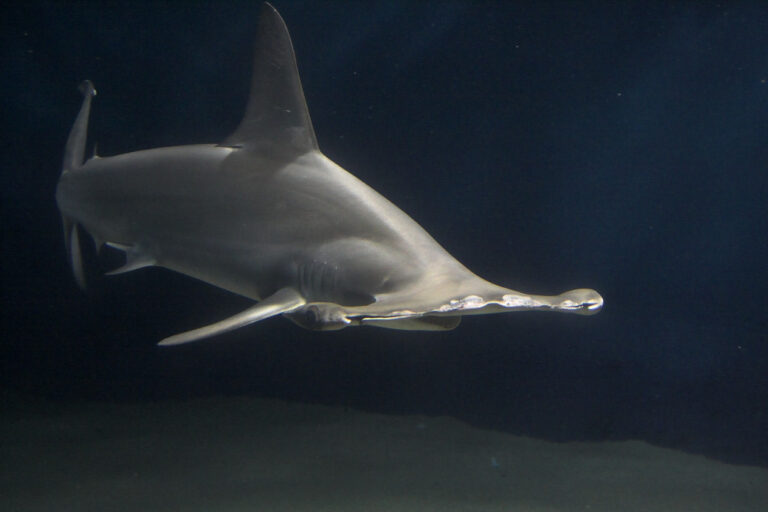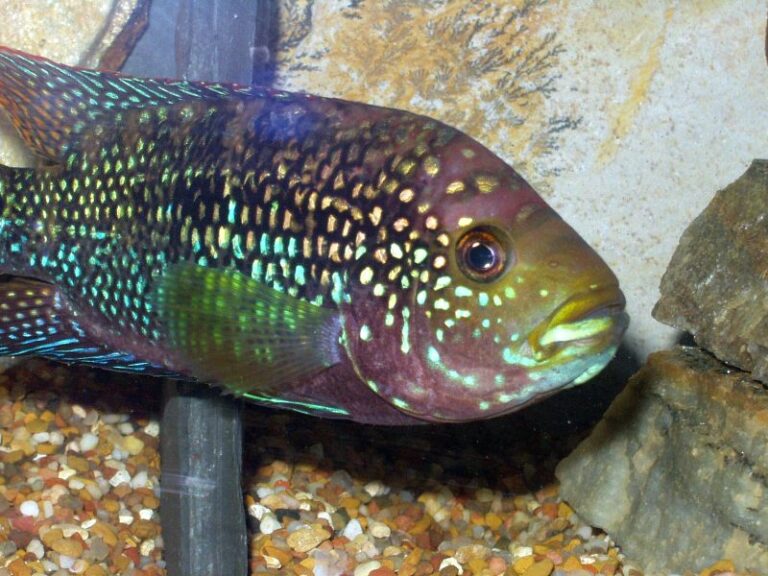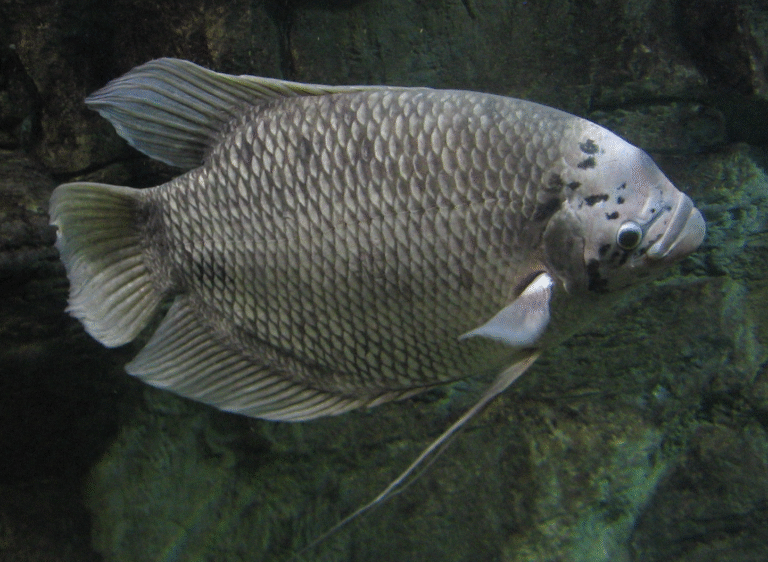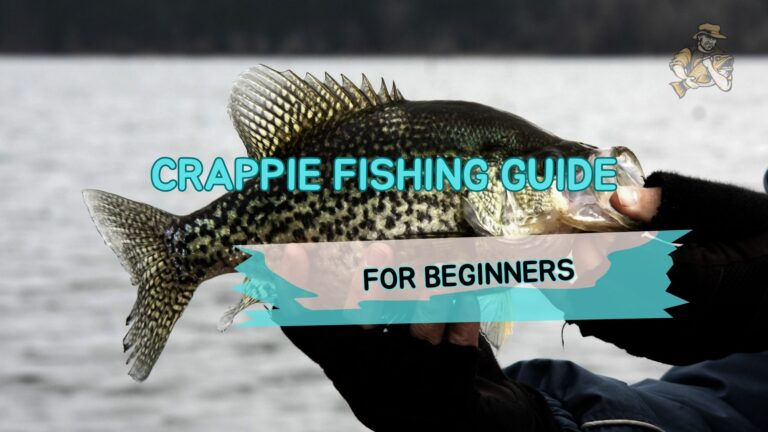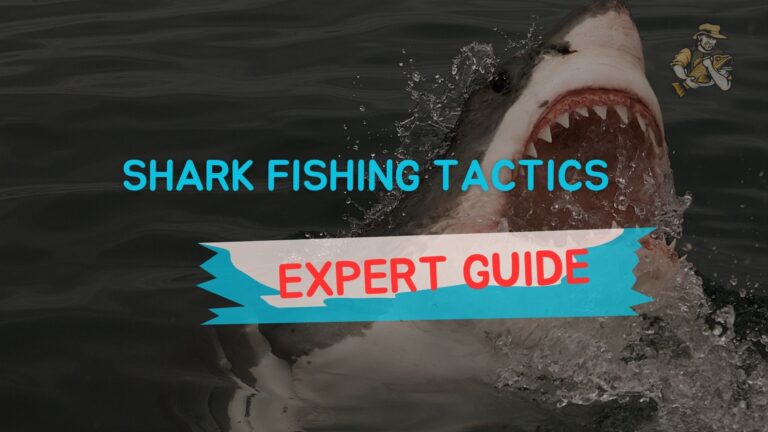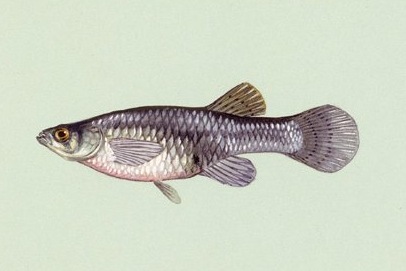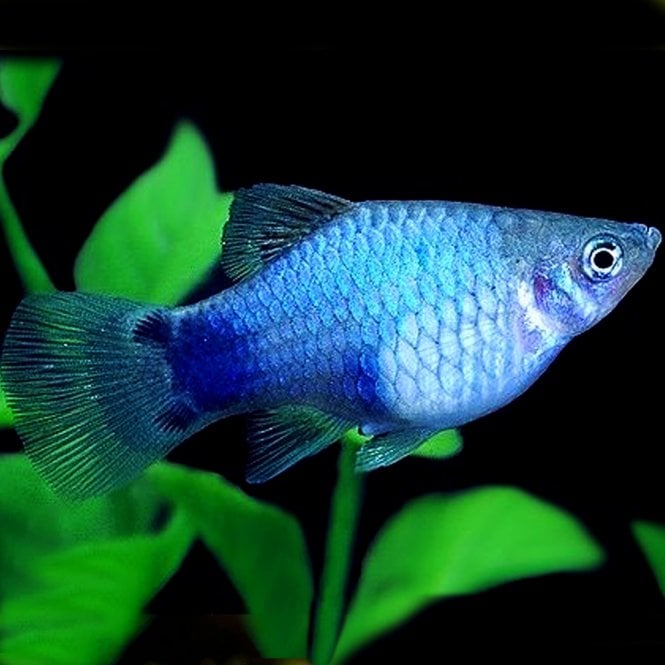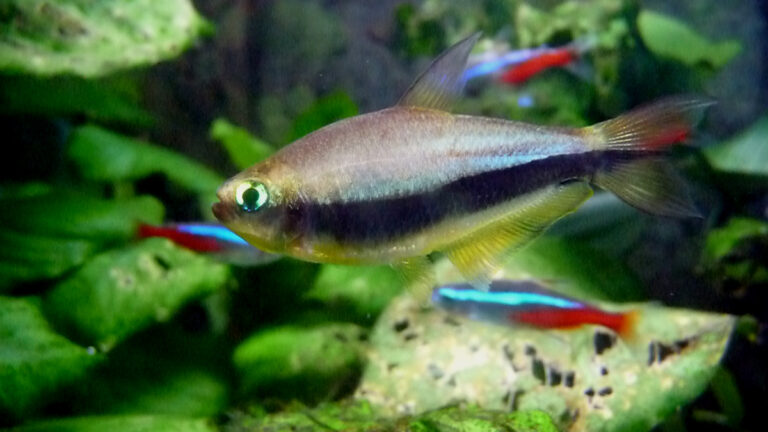Black Neon Tetra
By Ryan Maron | Last Modified: June 7, 2025
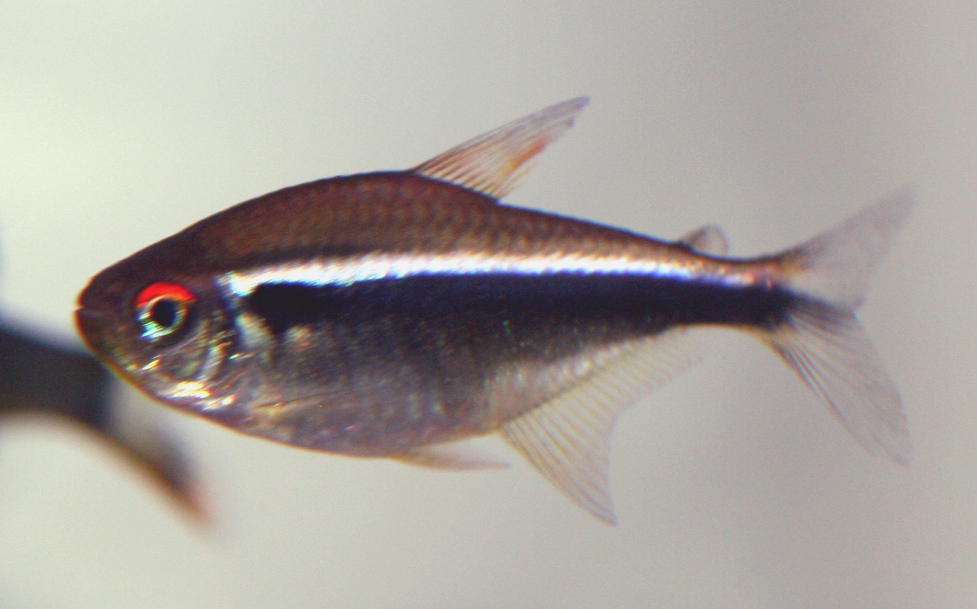
The Black Neon Tetra (Hyphessobrycon herbertaxelrodi) stands as one of the most distinctive freshwater fish species in the aquarium trade, renowned for its striking black horizontal stripe and peaceful schooling behavior. This small characin, native to the river systems of South America, plays a crucial ecological role as both a micro-predator of small invertebrates and an essential forage species for larger fish in its natural habitat. Despite its common name suggesting a relationship to the more familiar Neon Tetra, the Black Neon Tetra represents a separate species with unique adaptations and ecological significance within the Amazonian ecosystem.
The species has garnered considerable attention from both aquarists and ichthyologists due to its remarkable adaptability and the insights it provides into freshwater community dynamics. As a schooling fish that exhibits complex social behaviors and environmental responses, the Black Neon Tetra serves as an indicator species for water quality and ecosystem health in its native tributaries of the Paraguay and Brazil river basins.
| Feature | Details |
|---|---|
| Common Name | Black Neon Tetra |
| Scientific Name | Hyphessobrycon herbertaxelrodi |
| Family | Characidae |
| Typical Size | 3.2 cm (1.25 inches), 0.8-1.2 grams |
| Habitat | Soft-water tributaries and flooded forests |
| Diet | Omnivorous micro-predator |
| Distribution | Paraguay and Brazil river basins |
| Conservation Status | Least Concern |
Taxonomy & Classification
The Black Neon Tetra belongs to the family Characidae, one of the most diverse freshwater fish families comprising over 1,100 species worldwide. Within this family, Hyphessobrycon herbertaxelrodi occupies a distinct position in the genus Hyphessobrycon, which encompasses numerous small, colorful South American tetras. The species was first scientifically described by Géry in 1961, with the specific epithet “herbertaxelrodi” honoring Herbert R. Axelrod, a prominent ichthyologist and aquarium fish collector.
Phylogenetic analysis places the Black Neon Tetra within the broader characiform order, which represents one of the most successful radiations of freshwater fish in the Neotropical region. The genus Hyphessobrycon itself contains approximately 140 recognized species, making it one of the largest genera within the Characidae family. Recent molecular studies have revealed complex evolutionary relationships within this group, with the Black Neon Tetra showing closer genetic affinity to other South American tetras than to the true Neon Tetra (Paracheirodon innesi).
The taxonomic classification follows the standard hierarchical system: Kingdom Animalia, Phylum Chordata, Class Actinopterygii, Order Characiformes, Family Characidae, Genus Hyphessobrycon, and Species herbertaxelrodi. This classification reflects the species’ evolutionary history and its relationship to other characiform fishes that have adapted to similar ecological niches throughout South America’s river systems.
Physical Description
The Black Neon Tetra exhibits a streamlined, fusiform body shape characteristic of active swimming species, with adults typically measuring 3.2 centimeters in total length. The most distinctive feature is the prominent black horizontal stripe that extends from the posterior edge of the operculum to the base of the caudal fin, creating a bold contrast against the fish’s silvery body coloration. Above this black stripe runs a narrower, iridescent golden stripe that provides a subtle but striking accent under appropriate lighting conditions.
The body depth measures approximately 25-30% of the standard length, contributing to the species’ hydrodynamic efficiency during schooling movements. The dorsal fin contains 11 rays, while the anal fin typically has 25-28 rays, with the adipose fin being small but clearly present. The caudal fin displays a slightly forked configuration that enhances swimming performance and maneuverability within dense vegetation.
Sexual dimorphism becomes apparent in mature specimens, with females generally displaying a more robust body profile and slightly larger size than males. Males often exhibit more intense coloration, particularly in the golden stripe, and may show subtle differences in fin shape during breeding condition. The eye size is proportionally large relative to head size, measuring approximately 30-35% of head length, which aids in detecting small prey items and predators in the dimly lit waters of their natural habitat.
The scales are cycloid and relatively large for the fish’s size, with the lateral line system clearly visible and functional for detecting water movement and nearby objects. This sensory system proves essential for maintaining cohesion within schools and responding to environmental changes in their turbid natural waters.
Habitat & Distribution
The Black Neon Tetra inhabits the soft-water tributaries of the Paraguay River basin and various Brazilian river systems, with confirmed populations in the Pantanal wetlands and surrounding areas. These environments typically feature water temperatures ranging from 22-28°C, with pH values between 5.5-7.0 and extremely low mineral content. The natural habitat consists of slow-moving streams, flooded forest areas during high water periods, and shallow tributary systems with abundant vegetation.
During the wet season, which occurs from October through March, Black Neon Tetras move into temporarily flooded forest areas where they exploit rich feeding opportunities among submerged vegetation and leaf litter. These seasonal migrations represent critical components of their life cycle, providing access to spawning sites and abundant food resources that support population reproduction and growth.
The substrate in their natural environment typically consists of fine sand, decomposing organic matter, and fallen leaves that create the characteristic brown-water conditions common throughout much of the Amazon basin. Water hardness rarely exceeds 4 dGH, and conductivity measurements often fall below 50 microsiemens, reflecting the extremely pure nature of these tropical freshwater systems.
Vegetation in their natural habitat includes various species of aquatic plants, fallen branches, and root systems that provide shelter and foraging opportunities. The canopy cover in forested areas creates dappled lighting conditions that influence the species’ behavior and coloration patterns. These environmental factors have shaped the evolutionary adaptations observed in captive populations and inform successful aquarium husbandry practices.
Diet & Feeding Behavior
The Black Neon Tetra functions as an opportunistic omnivore, exhibiting feeding behaviors that reflect both predatory and herbivorous tendencies depending on available food sources. In their natural environment, these fish consume a diverse array of small invertebrates, including copepods, rotifers, small worms, and various arthropod larvae that inhabit the water column and substrate surfaces.
During periods of high water when forests become flooded, Black Neon Tetras capitalize on terrestrial insects, small crustaceans, and organic detritus that become available in these temporary aquatic environments. Their feeding strategy involves active foraging both in the water column and near the substrate, with individuals often seen picking at biofilm and small organisms growing on submerged surfaces.
The species demonstrates opportunistic feeding on phytoplankton and small algae, particularly during seasons when animal protein sources become less abundant. Their pharyngeal teeth are well-adapted for processing both plant and animal matter, allowing them to extract maximum nutritional value from diverse food sources. Research has shown that individuals can adjust their feeding behavior based on prey density and environmental conditions.
Feeding typically occurs in coordinated group activities, with schools moving through productive areas while individual fish dart out to capture prey items before rejoining the group. This cooperative foraging behavior provides protection from predators while maximizing feeding efficiency. The species shows peak feeding activity during dawn and dusk periods, corresponding to times when many prey organisms are most active in the water column.
Behavior & Adaptations
Black Neon Tetras exhibit highly developed schooling behavior, with groups typically consisting of 20-100 individuals in natural settings. This aggregation serves multiple functions including predator avoidance, enhanced foraging efficiency, and improved navigation through complex aquatic environments. The schooling behavior follows specific patterns, with individuals maintaining precise spacing and coordination that can be disrupted by environmental stressors or predator presence.
The species demonstrates remarkable adaptability to changing water conditions, particularly during seasonal flooding cycles that dramatically alter their habitat structure. During low water periods, schools concentrate in deeper pools and main channel areas, while high water allows for dispersal into newly flooded territories rich in feeding opportunities.
Communication within schools occurs through visual cues, lateral line detection of water movement, and possibly chemical signals. The prominent black stripe serves not only as species identification but also as a visual reference point for maintaining school cohesion. Research has documented complex swimming patterns within schools that suggest sophisticated social organization and decision-making processes.
Territorial behavior emerges primarily during breeding periods, when males establish and defend small spawning territories among vegetation. Outside of reproductive seasons, aggression remains minimal, with the species showing remarkable tolerance for conspecifics and other similarly sized fish species that share their habitat.
The species has evolved specific adaptations for life in soft, acidic waters, including enhanced osmoregulatory capabilities and tolerance for low pH conditions that would be lethal to many freshwater fish species. These physiological adaptations reflect millions of years of evolution in the unique chemical environment of South American blackwater and clearwater systems.
Reproduction & Life Cycle
Black Neon Tetra reproduction follows seasonal patterns closely tied to environmental conditions, with peak spawning activity occurring during the early wet season when water levels begin rising and food availability increases. The species reaches sexual maturity at approximately 6-8 months of age, corresponding to a standard length of 2.5-3.0 centimeters.
Breeding behavior involves complex courtship rituals where males establish temporary territories among fine-leaved vegetation or spawning substrates. Males display intensified coloration and perform elaborate swimming patterns to attract females, with successful pairings resulting in the release of 300-500 transparent, adhesive eggs measuring approximately 1.0-1.2 millimeters in diameter.
Fertilized eggs require 24-36 hours for hatching at temperatures of 25-27°C, with newly hatched larvae measuring approximately 3-4 millimeters in length. The larval stage lasts 3-4 days before yolk sac absorption is complete and free-swimming fry begin actively feeding on microscopic organisms including infusoria, rotifers, and newly hatched brine shrimp nauplii.
Juvenile development proceeds rapidly under optimal conditions, with young fish achieving recognizable adult coloration patterns within 4-6 weeks post-hatching. Growth rates vary significantly based on food availability, water temperature, and population density, with well-fed individuals potentially reaching adult size within 3-4 months.
The species exhibits no parental care behavior, with adults consuming their own eggs and fry if encountered. This reproductive strategy relies on high fecundity and favorable environmental conditions during spawning periods to ensure population recruitment. Successful reproduction requires specific water chemistry parameters and environmental triggers that simulate natural seasonal conditions.
Predators & Threats
In their natural habitat, Black Neon Tetras face predation pressure from various piscivorous species including larger characiforms, cichlids, and catfish species that inhabit the same river systems. Juvenile fish are particularly vulnerable to predation from aquatic insects, small crustaceans, and other invertebrate predators that can capture and consume newly hatched fry and small juveniles.
Avian predators represent another significant threat, particularly during periods when schools venture into shallow water areas for feeding or during seasonal migrations. Species such as kingfishers, herons, and other fish-eating birds can significantly impact local populations, especially in areas with reduced overhead cover.
The primary anthropogenic threats to wild populations include habitat destruction through deforestation, agricultural expansion, and water pollution from agricultural runoff and industrial activities. Dam construction and water diversion projects have fragmented many river systems, disrupting the seasonal flooding patterns essential for the species’ reproductive success and feeding behavior.
Climate change impacts on precipitation patterns threaten to alter the timing and extent of seasonal flooding, potentially disrupting the synchronized life cycle events that have evolved over thousands of years. Changes in water temperature and chemistry could also affect the delicate balance of the ecosystems these fish depend upon.
Collection pressure for the aquarium trade has historically impacted some populations, though most commercial specimens are now produced through captive breeding programs. However, continued wild collection in certain regions may still pose localized threats to population stability, particularly when combined with other environmental stressors.
Conservation Status
The International Union for Conservation of Nature (IUCN) currently classifies the Black Neon Tetra as Least Concern, reflecting the species’ relatively stable population status and wide distribution throughout suitable habitat areas. However, this designation does not account for localized population declines or the cumulative impacts of ongoing environmental changes throughout their range.
Regional assessments have identified areas of concern, particularly in heavily developed portions of the Paraguay River basin where agricultural activities and urban development have significantly altered aquatic ecosystems. Water quality monitoring in these areas has documented increasing levels of agricultural chemicals, sediment loading, and nutrient enrichment that can negatively impact sensitive species like the Black Neon Tetra.
Conservation efforts focus primarily on habitat preservation and restoration, with several protected areas encompassing critical watersheds within the species’ natural range. The Pantanal conservation area represents one of the most important refugia for this species and countless other aquatic organisms that depend on seasonal flooding cycles.
Captive breeding programs have successfully reduced pressure on wild populations while maintaining genetic diversity necessary for long-term species survival. These programs have also contributed to scientific understanding of the species’ biology and ecology, informing both conservation strategies and aquarium husbandry practices.
Monitoring programs established by Brazilian and Paraguayan environmental agencies continue to assess population trends and habitat quality throughout the species’ range. These efforts provide essential data for adaptive management strategies and early warning systems for potential conservation concerns.
Human Interaction
The Black Neon Tetra has maintained significant importance in the international aquarium trade since its introduction to hobbyists in the 1960s. The species’ peaceful temperament, attractive appearance, and relatively simple care requirements have made it a popular choice for community aquariums worldwide. Commercial breeding operations now supply the majority of specimens in the trade, reducing pressure on wild populations while providing economic opportunities in range countries.
Aquarium husbandry of Black Neon Tetras requires attention to water chemistry parameters that replicate their natural environment, including soft, slightly acidic water conditions and stable temperatures between 22-26°C. Success in captive breeding has contributed to scientific understanding of the species’ reproductive biology and behavioral ecology.
The species has limited direct economic importance to local communities within its natural range, though it contributes to the broader ecosystem services provided by healthy freshwater systems. Indigenous communities have traditionally recognized these fish as indicators of water quality and ecosystem health, incorporating observations of tetra populations into traditional ecological knowledge systems.
Scientific research on Black Neon Tetras has contributed to broader understanding of characiform evolution, schooling behavior, and freshwater ecosystem dynamics. Laboratory studies using this species have provided insights into fish behavior, physiology, and ecology that benefit conservation efforts for related species throughout South America.
Educational programs in aquariums and universities often feature Black Neon Tetras as representatives of South American freshwater biodiversity, helping to raise awareness about the importance of tropical freshwater ecosystem conservation. These programs highlight the connections between aquarium hobbyists and wild conservation efforts.
Interesting Facts
The Black Neon Tetra can survive in water with remarkably low mineral content, tolerating conditions that would quickly prove fatal to most freshwater fish species. This adaptation allows them to thrive in the virtually distilled water conditions found in many Amazonian tributaries during peak rainy seasons.
Despite their small size, Black Neon Tetras can live up to 5-8 years in optimal conditions, significantly longer than many other small characids. This longevity contributes to their success as both aquarium fish and wild populations that must survive seasonal environmental fluctuations.
The species exhibits remarkable color-changing abilities, with the intensity of their black stripe and golden accent varying based on mood, environmental conditions, and social interactions. Stressed individuals often display faded coloration, while breeding fish show enhanced color intensity.
Research has revealed that Black Neon Tetras possess sophisticated spatial memory capabilities, allowing schools to navigate complex environments and return to productive feeding areas with remarkable accuracy. This cognitive ability contributes to their survival in seasonally changing habitats where landmark recognition becomes crucial.
The fish demonstrate unique sleeping behavior, with individuals assuming specific positions within schools during rest periods and showing reduced responsiveness to stimuli while maintaining awareness of predator threats. This behavior suggests complex neural adaptations for balancing energy conservation with survival needs.
Black Neon Tetras can detect and respond to chemical alarm substances released by injured conspecifics, triggering immediate schooling tightening and evasive behaviors that enhance group survival during predator encounters. This chemical communication system represents one of many sophisticated adaptations that have evolved in schooling fish species.
Frequently Asked Questions
How can you distinguish Black Neon Tetras from other similar tetra species?
Black Neon Tetras are distinguished by their prominent black horizontal stripe extending from behind the gill cover to the tail base, accompanied by a thinner golden stripe above it. Unlike the true Neon Tetra’s bright blue and red coloration, Black Neon Tetras display a more subdued silver body with the distinctive black marking as their primary identifying feature.
What water conditions do Black Neon Tetras require in captivity?
Black Neon Tetras thrive in soft, slightly acidic water with pH levels between 5.5-7.0 and hardness below 4 dGH. Water temperature should remain stable between 22-26°C, and the aquarium should include plenty of plants and subdued lighting to replicate their natural forest stream environment.
How many Black Neon Tetras should be kept together in an aquarium?
Black Neon Tetras should be maintained in groups of at least 6-8 individuals, though groups of 10-15 or more will display more natural schooling behaviors and reduced stress levels. Larger groups also showcase the species’ impressive synchronized swimming patterns and social interactions.
Can Black Neon Tetras breed successfully in home aquariums?
Black Neon Tetras can breed in captivity with proper conditions including very soft, acidic water, fine-leaved plants for spawning, and separate breeding tanks to protect eggs from adult predation. Breeding requires specific environmental triggers and careful attention to water chemistry parameters that simulate their natural spawning conditions.
Conclusion
The Black Neon Tetra represents a remarkable example of evolutionary adaptation to the unique environmental conditions found in South American freshwater systems, demonstrating the incredible diversity and specialization present within the Characidae family. As both an important component of natural aquatic ecosystems and a beloved aquarium species, Hyphessobrycon herbertaxelrodi continues to provide valuable insights into freshwater fish ecology, behavior, and conservation biology. Understanding and protecting this species and its habitat requirements remains essential for maintaining the biodiversity and ecological integrity of Neotropical freshwater ecosystems for future generations.
Share The Article:
More Fish Species:
-
Spinner Shark
The Spinner Shark (Carcharhinus brevipinna) stands as one of the ocean’s most distinctive and acrobatic predators, earning its name…
-
Pacu Fish
Pacu fish represent one of South America’s most ecologically significant freshwater species, encompassing several closely related members of the…
-
Mickey Mouse Platy
The Mickey Mouse Platy (*Xiphophorus maculatus*) stands as one of the most recognizable and beloved freshwater aquarium fish in…
-
Hammerhead Shark
The Hammerhead Shark represents one of the most distinctive and fascinating apex predators in marine ecosystems worldwide. These remarkable…
-
Jack Dempsey Fish
The Jack Dempsey Fish stands as one of Central America’s most distinctive cichlid species, captivating aquarists and researchers alike…
-
Giant Gourami
The Giant Gourami (Osphronemus goramy) represents one of the most remarkable freshwater fish species in Southeast Asia, distinguished by…
Discover
-
Surfcasting Techniques: Master Beach Fishing and Catch More Fish
There’s something almost magical about standing at the edge of an ocean, rod in hand, as waves crash around…
-
Crappie Fishing Guide for Beginners | 2025
Crappie fishing might just be one of the most rewarding experiences for new anglers. These popular panfish are abundant,…
-
Planning a Family Fishing Trip: Tips for a Hooked-on-Fun Adventure
There’s something almost magical about watching a kid’s face light up when they feel that first tug on their…
-
How to Become a Better Fisherman in 2025: Master These 5 Skills
There’s something magical about that moment when your line goes tight and you feel the unmistakable pull of a…
-
7 Shark Fishing Tactics That Actually Work (Expert Guide)
Shark fishing remains one of those bucket-list experiences that separates casual anglers from the truly adventure-hungry. But here’s the…
-
Best Fishing Line for Bass in 2025: What Actually Works
I still remember the day I lost that monster largemouth on Lake St. Clair back in 2019. The fish…
Discover
-
Baja Sportfishing: Marlin, Tuna, and Dorado Tactics
The first time I ventured into Baja sportfishing waters, I did almost everything wrong. I chartered a boat out…
-
Mosquito Fish
The Mosquito Fish (Gambusia affinis) stands as one of North America’s most ecologically significant freshwater species, despite its diminutive…
-
Blue Platy
The Blue Platy (Xiphophorus maculatus) stands as one of the most recognizable and culturally significant freshwater fish species in…
-
Best Fishing Lures for Walleye: Pro Secrets You Won’t Believe
Let me tell you something about walleye fishing that most anglers get completely wrong. After 30+ years of chasing…
-
Emperor Tetra
The Emperor Tetra (*Nematobrycon palmeri*) stands as one of the most distinctive and sought-after freshwater fish species in the…
-
North Jersey Fishing Guide: Best Lakes, Rivers & Seasons
If you’ve never experienced the fishing in North Jersey, you’re missing out on some genuinely underrated angling opportunities. From…

